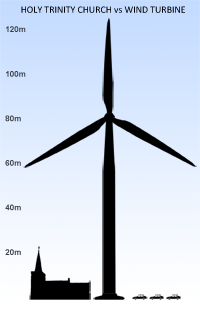- Home
- Proposals
- The Arguments
- About Us
- News
- BBC bias on climate change
- Latest News
- Climate change balance lost by BBC
- Energy Prices-The Times
- Turbines trash landscape benefit billionaires
- Global Warming Panic Over!
- Mini-Nukes the future
- The dirty secret of Britain's power madness
- Extreme weather the new Global Warming
- Tax Payers Alliance Energy view
- Britain can't afford wind power
- Fracking = prosperity?
- Its time to drill- Times leader
- Thoughtful article on Fracking
- Wind double subsidised
- Deluded energy policy
- The EU U-turn over energy
- Windfarm Wars Company in Churchover
- New noise guidance increases risk of harm
- Peter Lilley MP, Delingpole's new hero
- Shale Gas update 2013
- Maggie U-turned on Global Warming
- Devastatingly sad news
- 'smart' energy technology
- Engineers surveyed 2011
- Lord Turnbull speaks out
- Miracle shale gas
- Planning application refused!
- Warwickshire heritage beauty spot protected!
- Press
- Articles
- Letters
- How To Help
- Donations
- Letters of Objection
- New Churchover PC Objection
- New Historic England Objection
- Churchover Resident Objection
- CPRE Objection
- English Heritage Objection
- Objection by expert R&F historian
- Leicestershire County Council objection
- Warwicks CC Ecology objection
- Harborough District Objection
- Churchover PC Objection
- Bitteswell PC Objection
- Pailton PC objection
- Some other Objections sent
- Rugby BC Planning Committee
- Contact Us
landscape visual impact analysis explained
Landscape Impacts
The effects of wind turbines on landscapes are assessed by Landscape & Visual Impact Analysis (LVIA). This catch-all term includes two distinct elements which can sometimes be contradictory.
In summary the difference is that a Landscape Impact Analysis (LIA) tries to assess the effects of proposals on the physical landscape, which may give rise to changes in landscape character.
Visual Impact Analysis (VIA) considers the changes to views caused by developments, their effects upon visual amenity, and how people respond to those changes.
There are many sources of advice and guidance on performing LVIAs but the two most often used today for windfarms are both Scottish guidance:
- “Visual representations of wind farms: Good Practice Guidelines” (Scottish Natural Heritage and Scottish Renewables Forum, March 2006)
- “Siting and designing windfarms in the landscape” (Scottish Natural Heritage, December 2009)
These are both available via www.snh.org.uk

